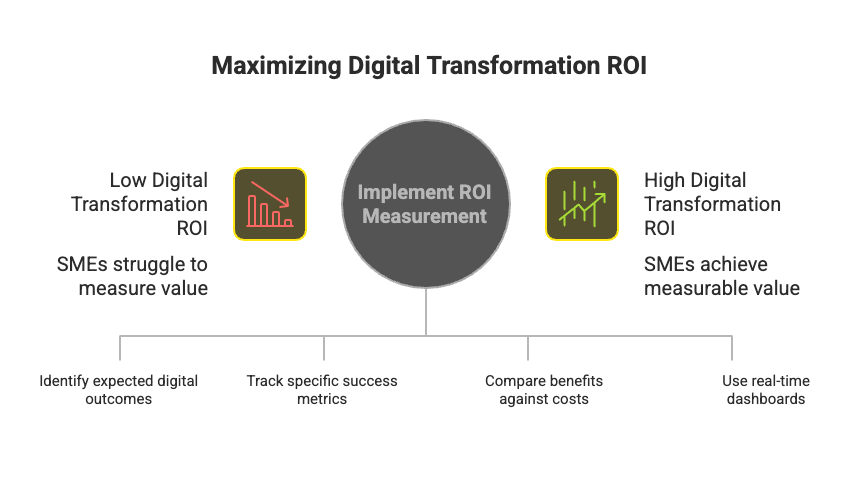How Low-Code Solutions Are Accelerating Digital Transformation in SMEs
In today’s fast-changing digital landscape, small and medium-sized enterprises (SMEs) must adapt quickly to remain competitive. However, digital transformation can be daunting for SMEs, especially when faced with limited budgets, resources, and technical expertise. That’s where low-code solutions come into play—offering a faster, cost-effective, and user-friendly way to implement digital transformation.
For businesses in Hong Kong and the Asia-Pacific region, low-code platforms are proving to be a game-changer. By enabling rapid development, process automation, and scalability, these tools empower SMEs to build custom applications and solutions without requiring extensive coding knowledge or large development teams.
At RMD HK, we’ve helped numerous SMEs leverage low-code platforms to streamline operations, enhance customer experiences, and future-proof their businesses. In this blog, we’ll explore how low-code solutions are accelerating digital transformation for SMEs, their key benefits, and actionable insights for businesses in Hong Kong.
What Are Low-Code Solutions?
Low-code platforms are development tools that allow users to create applications with minimal hand-coding. Using intuitive drag-and-drop interfaces, pre-built templates, and reusable components, low-code platforms make app development accessible to non-technical users while significantly reducing development time.
How Low-Code Differs from Traditional Development
- Traditional Development: Requires writing code from scratch, which is time-consuming, expensive, and dependent on skilled developers.
- Low-Code Development: Simplifies the process with visual tools, enabling faster delivery and reduced reliance on specialized coding expertise.
Popular low-code platforms include OutSystems, Mendix, and Microsoft Power Apps, all of which are designed to help businesses build robust applications quickly.
Why SMEs in Hong Kong Are Adopting Low-Code Solutions
1. Overcoming Resource Constraints
Hong Kong’s SMEs often operate with limited budgets and small teams. Low-code platforms eliminate the need for large development teams by enabling business users (also known as “citizen developers”) to build and deploy applications themselves.
Example:
A Hong Kong-based logistics company used low-code tools to automate its inventory management system. The solution was developed by a non-technical operations manager in just a few weeks, saving the company both time and money.
2. Speeding Up Time-to-Market
In Hong Kong’s highly competitive market, being first to market can provide a significant advantage. Low-code platforms allow SMEs to develop and deploy applications 10x faster than traditional methods, enabling them to respond quickly to customer needs and market opportunities.
Real-World Insight:
A local e-commerce SME used a low-code platform to launch a mobile app in just two months, compared to the six months it would have taken with traditional development. This agility allowed the business to capture market share during a peak shopping season.
3. Cost-Effectiveness
Hiring developers or outsourcing projects can be prohibitively expensive for SMEs. Low-code platforms reduce costs by:
- Minimizing the need for coding expertise.
- Accelerating development timelines.
- Reducing the reliance on third-party vendors.
Data Insight: According to Forrester, companies using low-code platforms reduce development costs by up to 70%.
4. Scalability and Flexibility
As SMEs grow, their business processes and customer needs evolve. Low-code platforms offer the scalability to adapt applications without rebuilding them from scratch, ensuring long-term flexibility.
Example:
A Hong Kong startup in the fintech sector used a low-code platform to launch its initial product. As the business expanded, the platform allowed them to add new features, such as payment gateways and customer analytics, without disrupting operations.
5. Enabling Process Automation
Automation is a cornerstone of digital transformation, and low-code platforms excel at automating repetitive tasks, such as:
- Customer onboarding.
- Invoice processing.
- Workflow approvals.
Case Study:
A Hong Kong-based SME in the hospitality industry used low-code automation tools to streamline its booking process. By automating manual tasks, the business reduced errors, saved 30% in operational costs, and improved customer satisfaction.
Key Benefits of Low-Code Solutions for SMEs
1. Democratizing Innovation
Low-code platforms empower non-technical employees to contribute to digital transformation initiatives, fostering a culture of innovation across the organization.
2. Improving Customer Experiences
With low-code tools, SMEs can create customized customer-facing applications, such as mobile apps and self-service portals, that enhance user experiences and build loyalty.
Example:
A local retail SME launched a loyalty app using a low-code platform, offering personalized discounts and rewards. This led to a 40% increase in repeat purchases.
3. Enhancing Agility
Low-code platforms enable SMEs to quickly adapt to changing market conditions, regulatory requirements, or customer demands, ensuring they stay ahead of the curve.
4. Reducing IT Backlogs
Many SMEs face bottlenecks due to overburdened IT teams. Low-code platforms alleviate this by allowing business users to take on development tasks, freeing IT teams for more complex projects.
5. Future-Proofing Technology Investments
Low-code platforms are designed to integrate with emerging technologies like AI, IoT, and cloud computing, ensuring SMEs can stay competitive as technology evolves.
Real-World Case Study: Low-Code Success in Hong Kong
Client: A mid-sized SME in the logistics sector.
Challenge: The company relied on manual processes for tracking deliveries, leading to inefficiencies and delayed shipments.
Solution: Using a low-code platform, the company developed a custom delivery tracking app with features like real-time GPS, automated notifications, and analytics dashboards.
Outcome:
- Reduced delivery errors by 50%.
- Improved on-time delivery rates by 35%.
- Enhanced customer satisfaction scores.
How to Get Started with Low-Code Solutions
1. Identify Key Areas for Transformation
Start by pinpointing processes or systems that are inefficient, outdated, or causing bottlenecks.
2. Choose the Right Low-Code Platform
Select a platform that aligns with your business needs, budget, and technical expertise. Popular options include:
- OutSystems: Ideal for enterprise-grade applications.
- Microsoft Power Apps: Great for SMEs already using Microsoft tools.
- Mendix: Known for its ease of use and flexibility.
3. Train Your Team
Invest in training employees to use low-code tools effectively. Many platforms offer tutorials, certifications, and community support to get started.
4. Start Small and Scale Gradually
Begin with a pilot project to test the platform’s capabilities and gather feedback. Once successful, scale your efforts to other areas of the business.
5. Partner with Experts
Collaborating with a digital transformation agency like RMD HK can help you maximize the potential of low-code solutions. Our team can guide you through platform selection, development, and long-term strategy.
FAQs: Low-Code Solutions and SME Digital Transformation
1. What are low-code platforms?
Low-code platforms are development tools that allow users to build applications with minimal coding, using visual interfaces and pre-built templates.
2. Are low-code solutions suitable for all SMEs?
Yes, low-code solutions are highly versatile and can be tailored to fit the needs of most SMEs, regardless of industry or size.
3. How much does a low-code platform cost?
Costs vary depending on the platform and features, but low-code platforms are generally more affordable than traditional development methods.
4. Do I need technical expertise to use low-code tools?
No, low-code platforms are designed for non-technical users, although basic training is recommended.
Why Choose RMD HK for Low-Code Solutions?
At RMD HK, we specialize in helping SMEs in Hong Kong leverage low-code platforms to accelerate digital transformation. Our expertise spans low-code development, process automation, and scalable solutions, ensuring your business stays ahead in a competitive market.
What We Offer:
- Platform Selection: Guidance on choosing the best low-code tools for your needs.
- Custom Development: Tailored applications that solve your unique challenges.
- Training and Support: Empowering your team to use low-code tools effectively.
Final Thoughts
Low-code solutions are revolutionizing how SMEs approach digital transformation. By enabling faster development, reducing costs, and empowering non-technical users, these platforms level the playing field for smaller businesses in competitive markets like Hong Kong.


.png)

